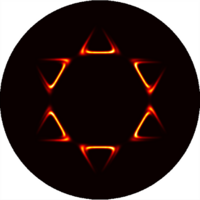Software
kMap.py
@Code, @Wikipedia, @YouTube, (Built distribution for Windows 10 available on request)
kMap.py is a python based program for simulation and data analysis in photoemission tomography. It provides an easy-to-use graphical user interface powered by PyQt5 to simulate photoemission momentum maps of molecular orbitals and to perform a one-to-one comparison between simulation and experiment. For this kMap.py provides tools like line- or region-restricted intensity scans/plots, interpolation capabilities, adjustable simulation parameters (like orientation, final state kinetic energy and polarization state of the incident light field) as well as an interface to powerful least-square fits between simulation and experiment to quickly determine optimal parameters.
Publication: Brandstetter et al., kMap.py: A Python program for simulation and data analysis in photoemission tomography, Computer Physics Communications 263, 107905 (2021)
ARUPS@VASP

The ARUPS@VASP code is a fortran code which simulates angle-resolved ultra-violet photoemission spectroscopy (ARUPS) intensity maps based on the one-step-model of photoemission. As initial states, it uses Kohn-Sham orbitals from a VASP calculation (WAVECAR-file). As final state, either a plane wave or a damped plane wave can be used. The program simulates ARUPS intensity maps either as "band-maps" I=I(k,Eb) for a given emission plane, as constant binding state "k-maps" I=I(kx,ky), or as constant intial state scans "CIS-scan" I=I(k,E_photon) for varying photon energies. More information about the method an application results can be found in the following
Publication: D. Lüftner et al., Understanding the photoemission distribution of strongly interacting two-dimensional overlayers, Phys. Rev. B 96, 125402 (2017).